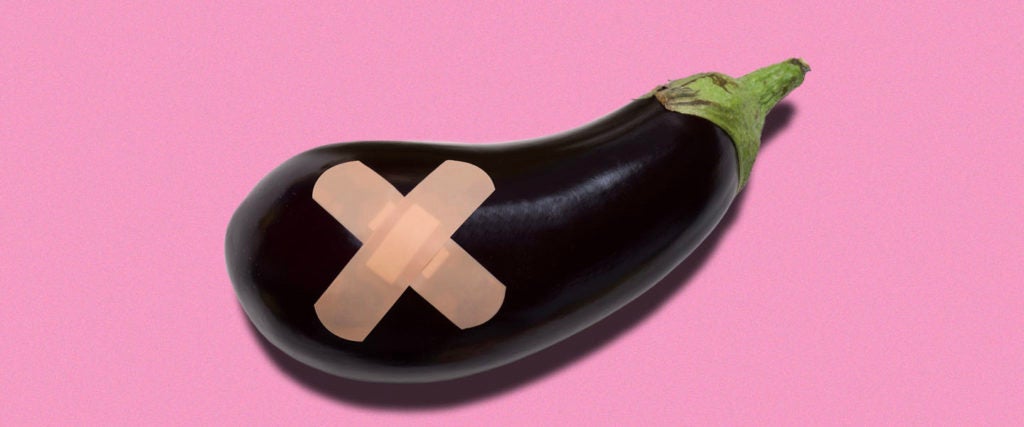Remember when you were young and could chalk up any aches in your limbs to “growing pains”?
Unfortunately, that’s not what’s going on when you experience pain in your dick as an adult. Whether the pain is in the middle of your shaft, just on one side of your shaft or only happens when you’re erect, none of it means that your penis is getting bigger. Sorry! It is, however, an indication that you should go to the doctor.
According to Joshua Gonzalez, board-certified urologist and Astroglide’s sexual health advisor, shaft pain most often occurs while erect. In this scenario, it might be the result of Peyronie’s, a condition in which scar tissue develops in the penis and often leads to curvature. While uncomfortable, it’s very common and very treatable. In fact, around 30 percent of cases resolve on their own.
When Peyronie’s can be ruled out as a cause, Gonzalez says that it’s often a nerve or muscle issue. “People have either a neuropathy of the pudendal nerve [the main nerve of the perineum that delivers sensation to the penis] or some underlying pelvic floor muscle problem causing tension that can sometimes be felt in the penis,” says Gonzalez.
In both cases, physical therapy, which can either alleviate the nerve pressure or strengthen the pelvic floor muscles, is typically the answer. “We see that a lot of people will come in complaining of pain, and it turns out that they have an underlying pelvic floor muscle problem,” Gonzalez says. “We send them to physical therapy, and a lot of times, they get better.”
But there’s another potential cause of shaft pain that, while temporary, can often hurt more than the rest — kidney stones. “As you’re passing a kidney stone, the lower it gets and approaches the bladder, the pain can be felt in the penis and scrotum,” Gonzalez explains. Most people are able to pass kidney stones on their own — aided and abetted, of course, by over-the-counter pain relievers and a lot of water — but if the stone is large enough, it could necessitate medical assistance.
“I counsel all my patients that it’s never a bad idea when you’re in pain or have swelling, a lump or a bump in that area to have it checked out,” Gonzalez tells me. “It’s almost always benign, but it’s better to check it earlier than ignore it. Especially if it’s a progressive disease like Peyronie’s, there may be stuff that we can do early on that can be helpful in resolving it.”
Because again, as much as you might want it to be, that’s no growing pain. You might not need a doctor to tell you that, but you’ll probably need one to make the pain go away.

